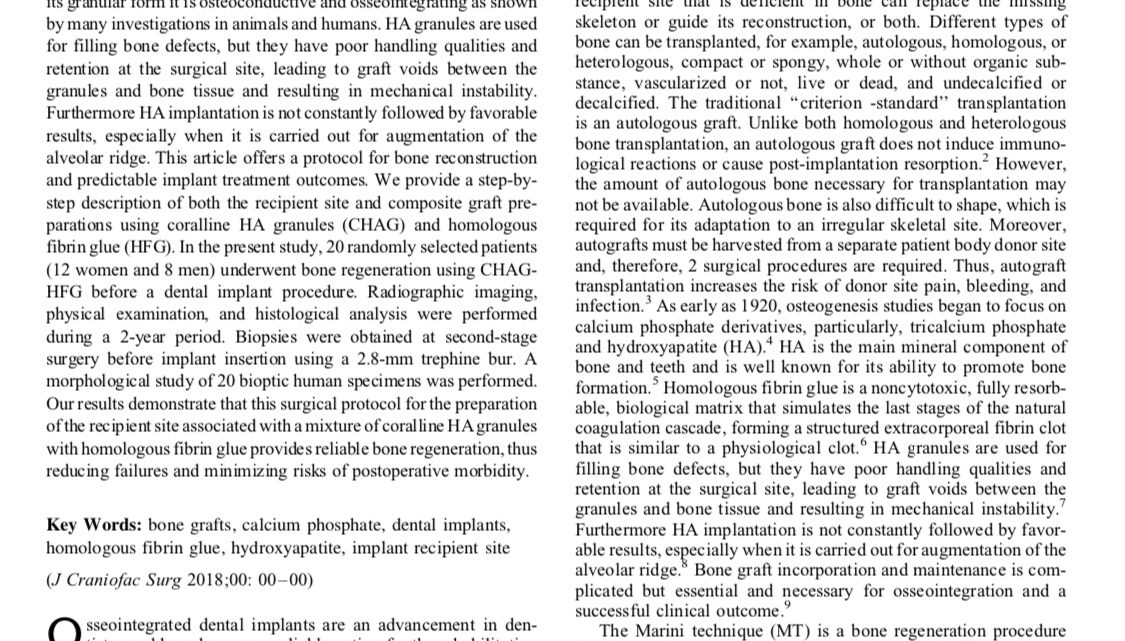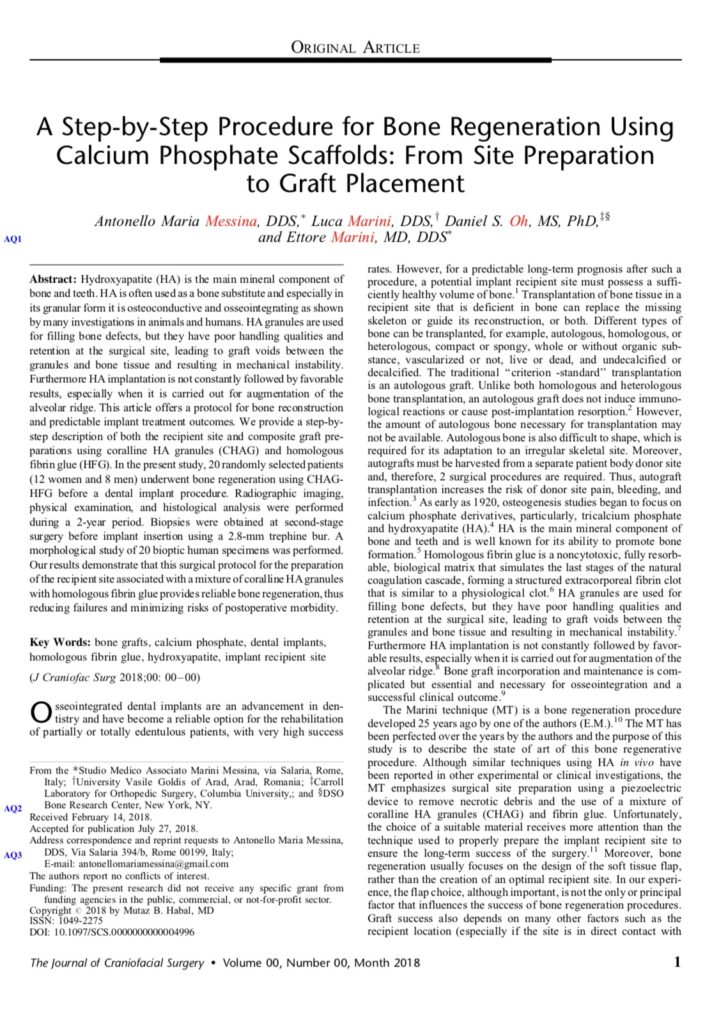
A Step by Step procedure for bone regeneration using calcium phosphate scaffolds: from site preparation to graft placement
Hydroxyapatite (HA) is the main mineral component of bone and teeth. HA is often used as a bone substitute and especially in its granular form it is osteoconductive and osseointegrating as shown by many investigations in animals and humans.
HA granules are used for filling bone defects, but they have poor handling qualities and retention at the surgical site, leading to graft voids between the granules and bone tissue and resulting in mechanical instability.
Furthermore HA implantation is not constantly followed by favorable results, especially when it is carried out for augmentation of the alveolar ridge.
This article offers a protocol for bone reconstruction and predictable implant treatment outcomes. We provide a step-by-step description of both the recipient site and composite graft preparations using coralline HA granules (CHAG) and homologous fibrin glue (HFG).
In the present study, 20 randomly selected patients (12 women and 8 men) underwent bone regeneration using CHAG-HFG before a dental implant procedure. Radiographic imaging, physical examination, and histological analysis were performed during a 2-year period.
Biopsies were obtained at second-stage surgery before implant insertion using a 2.8-mm trephine bur. A morphological study of 20 bioptic human specimens was performed.
Our results demonstrate that this surgical protocol for the preparation of the recipient site associated with a mixture of coralline HA granules with homologous fibrin glue provides reliable bone regeneration, thus reducing failures and minimizing risks of postoperative morbidity.
View Article on The Journal of Craniofacial Surgery

The Marini Technique
